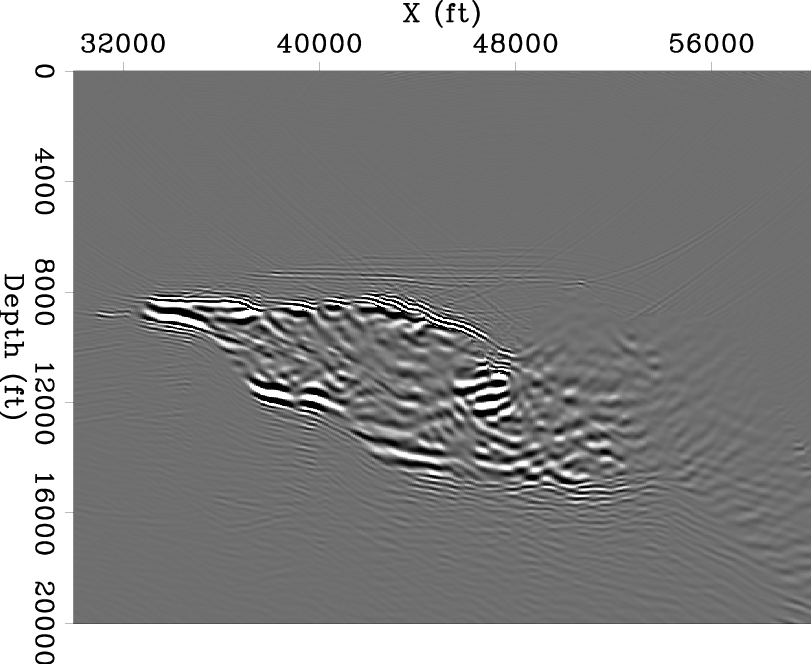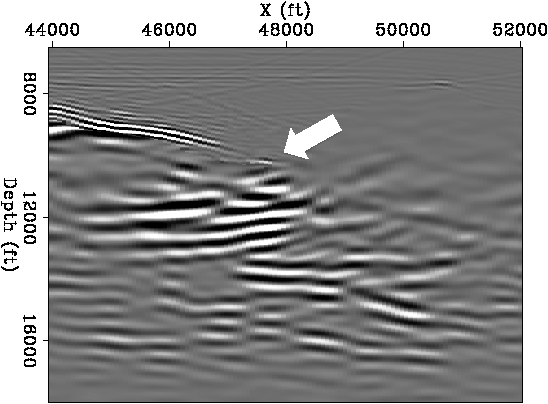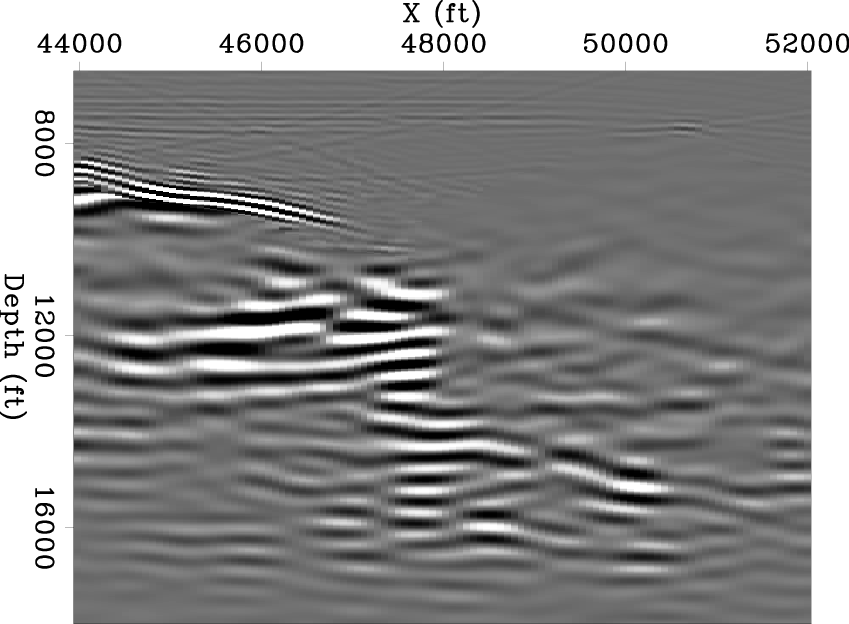|
|
|
|
Model-building with image segmentation and fast image updates |
 term is a complex weight value assigned to each shot.
term is a complex weight value assigned to each shot.
A simple experiment combines all shots into a single generalized source gather, and uses a single generalized plane-wave source function for migration. Figure 6 is the perfect-velocity image resulting from this procedure. While information from unwanted crosstalk terms have significantly degraded the image, the salt body and its boundaries are still visible. When the two possible salt-flood velocity models in Figures 4(a) and 4(b) are used, we obtain the zoomed-in images in Figures 7(a) and 7(b), respectively. While the differences between these two images is not as apparent as for Figures 5(a) and 5(b), the salt canyon walls appear more continuous for the first model, especially near the location indicated by the arrow. These migrations were completed in less than five seconds; although this is only a 2D example, this is approaching a level at which interactive imaging becomes feasible.

|
|---|
|
zmig-1p
Figure 6. A perfect-velocity migration in which all shots have been combined into a single generalized source gather, and a single plane-wave is used as the generalized source function. Crosstalk artifacts have significantly degraded the image, but the salt body is still clearly visible. |
|
|


|
|---|
|
zmig-mod1a,zmig-mod2
Figure 7. Generalized wavefield migrations corresponding to the velocity models in Figures 5(a) and 5(b). While crosstalk artifacts obscure the differences between the two images to a much greater extent than in Figures 5(a) and 5(b), the salt canyon wall is still noticeably more continuous near the indicated location in (a). |
|
|
Further improvents are necessary to obtain cleaner images than in Figures 6, 7(a) and 7(b). One option is to define the weighting coefficients from equation 5 as having only imaginary (phase) components:
| (6) |
 is the number of generalized sources. By making
is the number of generalized sources. By making
|
|
|
|
Model-building with image segmentation and fast image updates |